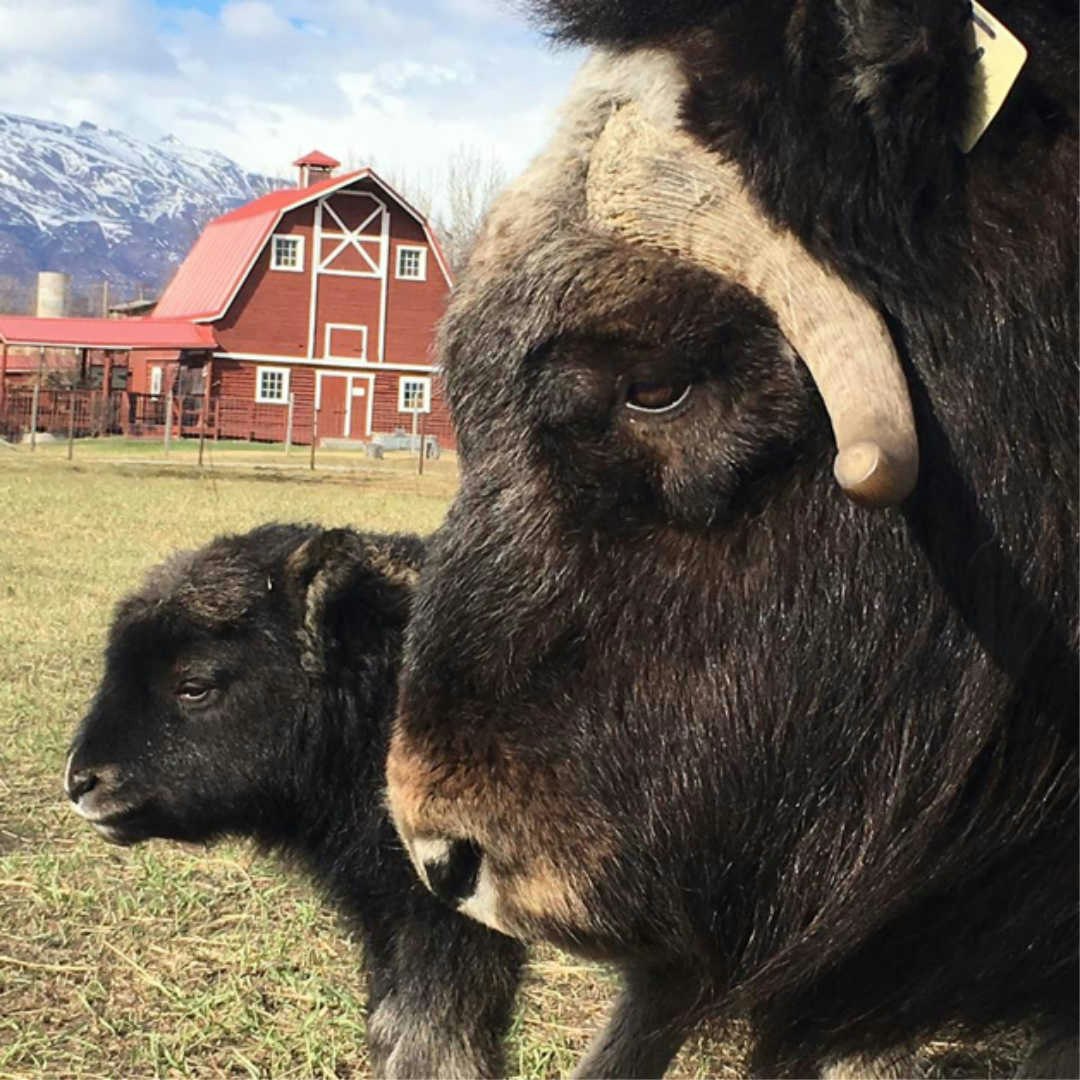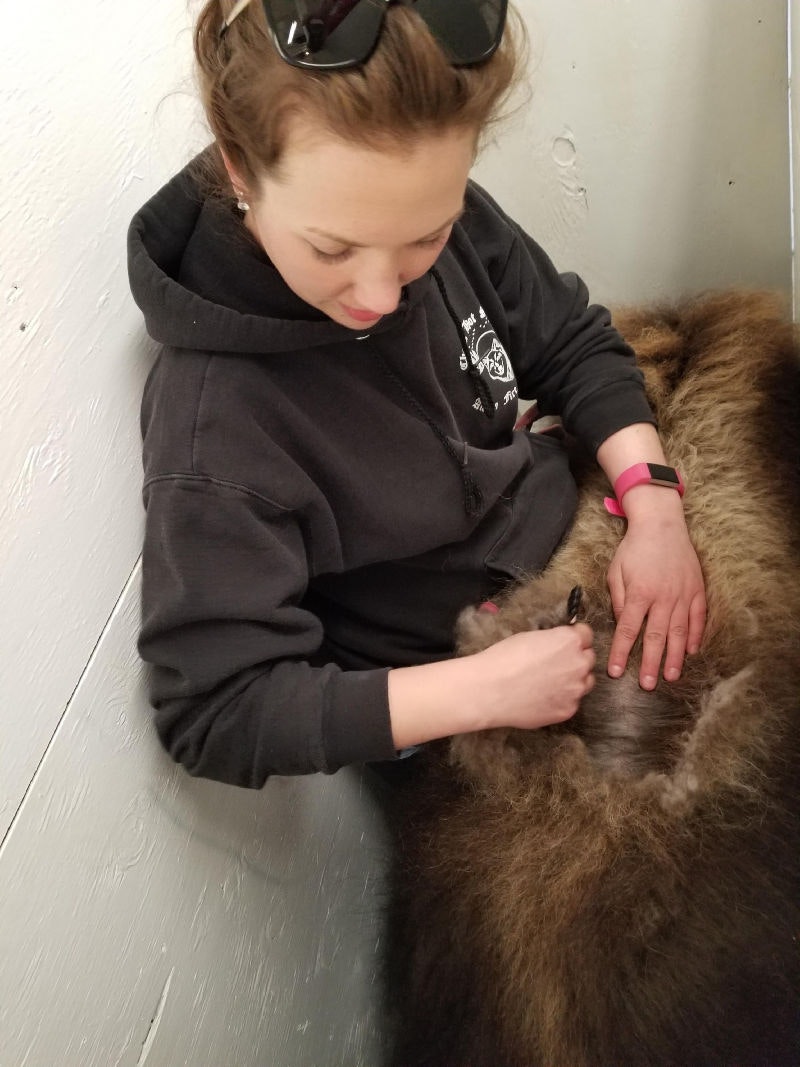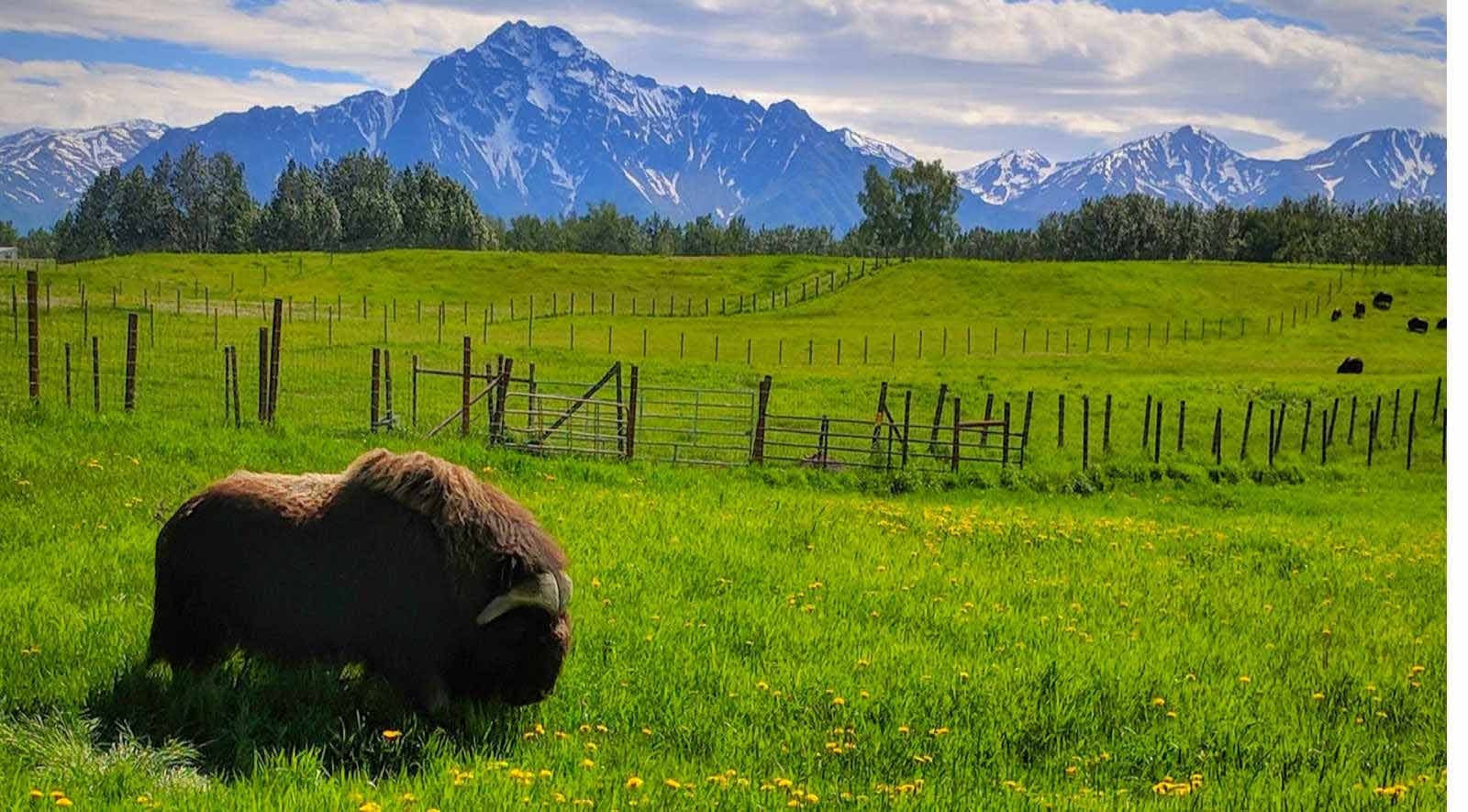Nestled in the Matanuska Valley just north of Palmer, Alaska, you’ll find the sprawling, 75-acre Musk Ox Farm: a unique project steeped in intrigue. It’s also where I work. Although we’re now a nonprofit organization, our journey with musk oxen began in the 1950s with our late founder John Teal Jr., anthropologist and arctic explorer.
Teal’s vision to domesticate musk oxen in their indigenous regions was not only an attempt to demonstrate that farming a geographically appropriate animal was more sustainable, but it could also boost local economies by providing Alaskan artisans the materials necessary to make knitted goods through harvesting the animals’ underwool, a fiber known as qiviut (pronounced ki-vee-Üt). Over 60 years later, the farm honors this original vision by continuing to domesticate the musk ox for qiviut production, demonstrating the economic opportunities of the fiber and educating the public about these magnificent ice-age creatures.

A musk ox cow and her calf.
Musk oxen are one of the few remarkable megafauna that survived the last ice age, providing us a rare glimpse into the prehistoric past and gifting us their incredible fiber. These majestic beasts had to evolve and adapt to thrive in the frigid arctic regions they call home. Their thick, double-layer coat of guard hair and qiviut keeps them warm in temperatures as low as -85 degrees Fahrenheit. Eight times warmer than sheep’s wool, a finished qiviut garment is considered highly desirable—especially by Alaskans as they battle long, cold winters.

A musk ox is gently combed to free the qiviut fiber.
Qiviut holds a myriad of other unique qualities that make it a highly sought-after fiber to work with and wear. Featherlight, finer than cashmere, and naturally smooth, the feeling of a qiviut garment against your skin is like touching a cloud. We harvest all 82 of our animals by gently handcombing their qiviut in the spring during their natural shedding cycle. It is imperative to us and to our mission that we pursue low-stress, gentle animal-handling practices, and this influences every decision made and method carried out. Combing is no exception, as we climb into a stall with each musk ox, carefully pulling away the qiviut with a hair pick, paying close attention to the animal’s response, comfort level, and needs.

Skeins of qiviut yarn ready to be turned into something wonderful.
The raw qiviut is then sent to a mill, where it is spun into yarn for our knitters to make into beautiful garments or kept as skeins so that our visitors can try their hands at their own qiviut creations. Our farm is open to our local community and to travelers far and wide; visitors can shop our qiviut selection in our gift shop, peruse our museum, or learn about our animals on a guided walking tour of the farm. We also offer fiber-arts classes and host special events and fund-raisers throughout the year—with knitting workshops and retreats coming soon on the horizon! To learn more about our farm, furry friends, and fiber, visit www.muskoxfarm.org or www.facebook.com/muskoxfarm.org.

